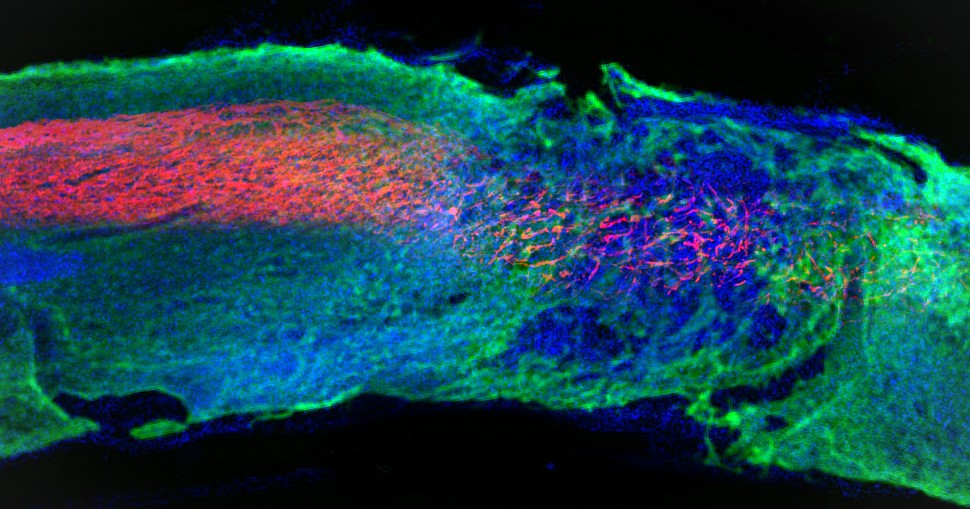“Dancing molecules,” the promising new treatment for acute spinal cord injuries developed at Northwestern University, has received Orphan Drug Designation from the U.S. Food and Drug Administration (FDA).
Developed by regenerative nanomedicine pioneer Samuel I. Stupp, the therapy harnesses molecular motion to reverse paralysis and repair tissues after traumatic spinal cord injuries. Stupp first introduced the platform in 2021 in a study published in the journal Science. In that study, a one-time injection administered 24 hours after severe injury helped mice regain the ability to walk — just four weeks after treatment.
The FDA’s Orphan Drug program is designed to encourage and support the development of treatments for rare diseases or conditions. The designation’s benefits include financial incentives such as tax credits for clinical trials, exemption from user fees and up to seven years of market exclusivity after approval.
Amphix Bio, a company spun out from Stupp’s Northwestern laboratory, is helping navigate the FDA approval process and has received early feedback from the agency on the drug development program for acute spinal cord injury. Amphix Bio is targeting late 2026 for the first trials in spinal cord injury patients and is now completing safety studies required for regulatory approval to begin human trials.
“Since we first published our results in 2021, we have validated the ability of these molecules to regenerate functional neural tissue in new animal models, different types of spinal cord injury and in other neurodegenerative diseases,” Stupp said. “This gives us confidence that we are on the right track in developing a new solution to treat this debilitating and very challenging condition.”
The chief scientific officer of Amphix Bio, Stupp is Board of Trustees Professor of Materials Science and Engineering, Chemistry, Medicine and Biomedical Engineering at Northwestern, where he has appointments in the McCormick School of Engineering, Weinberg College of Arts and Sciences and Feinberg School of Medicine. He also directs the Center for Regenerative Nanomedicine.
To administer the treatment, researchers inject the liquid therapy into the region where a spinal cord injury occurred. The liquid then gels into a network of nanofibers, which serve as a scaffold to support cell growth. These nanofibers contain bioactive signals that trigger potent regenerative pathways, enabling motor neurons from the brain to regrow past the injury site and connect to the lower spinal cord — re-establishing connections that were severed by injury.
By controlling the collective motion of the “dancing molecules” within the fibers, scientists discovered that intensifying the molecular motion increased the therapy’s signaling power and led to greater tissue regeneration and functional improvement in the injured animals.
According to the National Spinal Cord Injury Statistical Center at the University of Alabama at Birmingham, the United States has approximately 18,000 new cases of acute spinal cord injury each year.
“Experiencing a spinal cord injury is devastating for patients and their families, as it leads to a lifetime of lost mobility, high healthcare costs and a heavy reliance on caregivers,” said Dr. James Guest, a neurosurgeon and professor of neurological surgery at the University of Miami and the Miami Project to Cure Paralysis. “Previous attempts at treatments have faced many limitations but Professor Stupp’s team and Amphix Bio are taking a completely new approach to neural regeneration, with the potential for a breakthrough in the field.”
Northwestern University has financial interests (i.e. equity) in Amphix Bio. Samuel Stupp also has financial interests (i.e. equity) in and affiliations with Amphix Bio.
